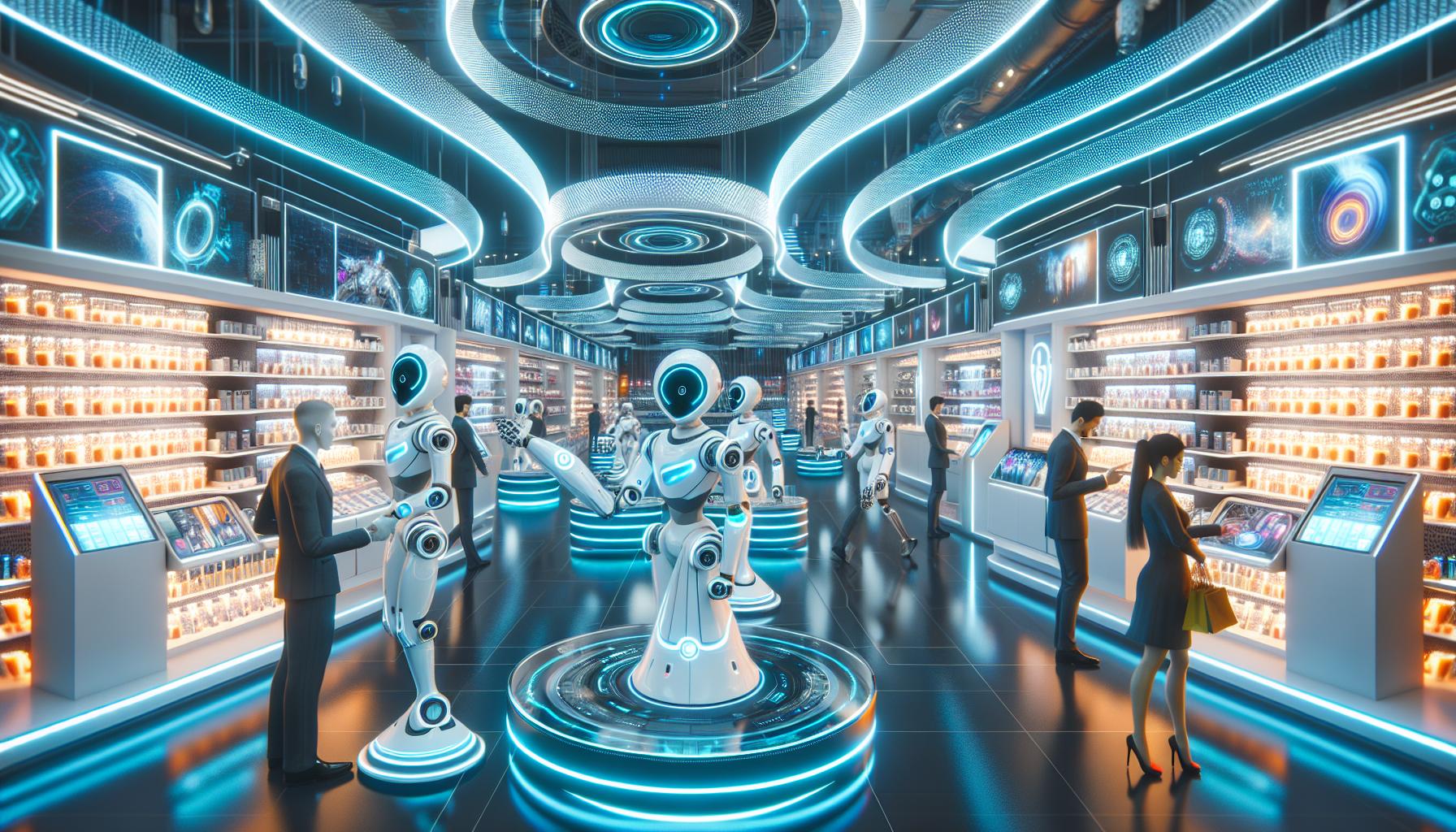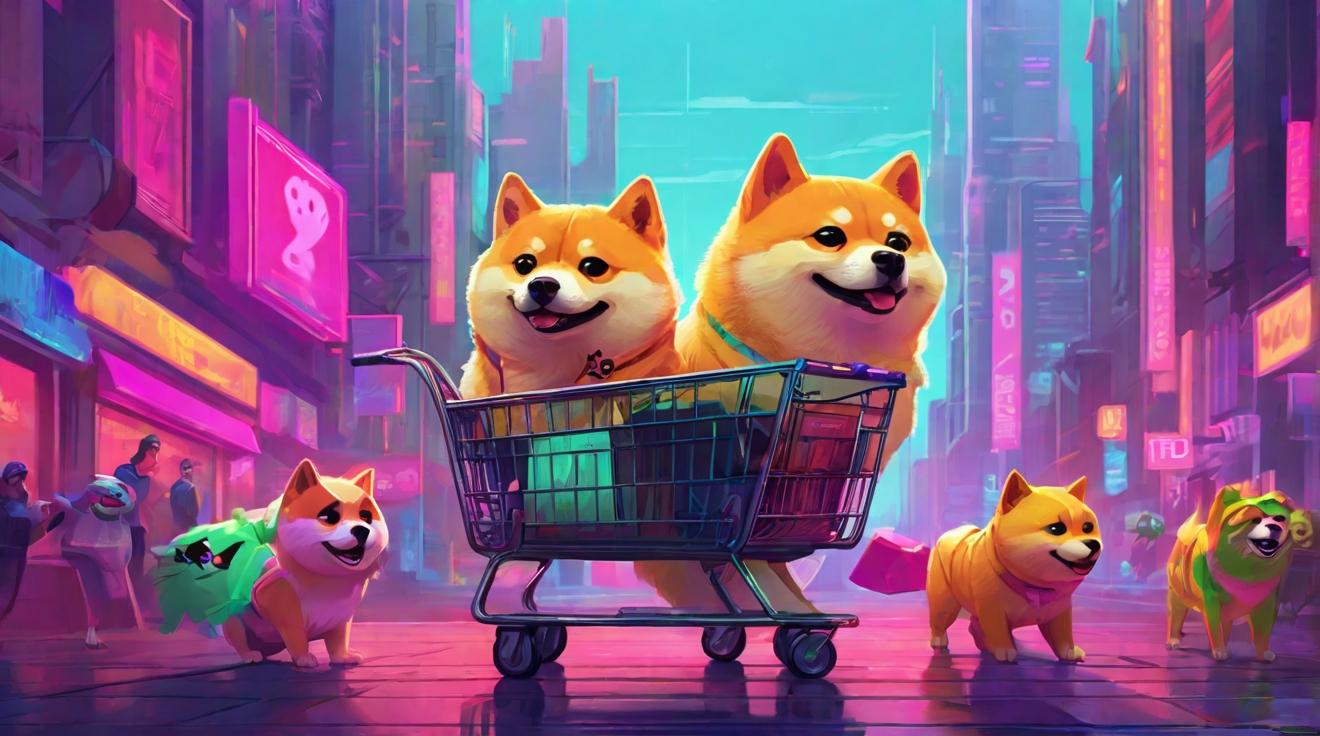The Rise of Robotics and AI in Brick and Mortar Stores
In an effort to enhance customer experience and increase efficiency, brick and mortar stores are increasingly incorporating robotics and artificial intelligence (AI) into their operations. At the National Retail Federation’s Expo in New York, various gadgets and gizmos were showcased, showcasing the rapidly changing landscape of the retail industry. These advancements aim to streamline the buying process, allowing customers to move through stores faster, while simultaneously boosting profits for businesses.
How Robots are Revolutionizing the Retail Industry
One of the major attractions at the Expo was Apollo, a humanoid robot designed to work autonomously in warehouses and factories. Unlike human employees, Apollo can work almost non-stop, with each battery pack lasting for four hours before being swapped out. This relentless work ethic allows businesses to maximize productivity, operating 22 hours a day, seven days a week. With the ability to automate repetitive tasks, such as stocking and sorting, robots like Apollo have the potential to revolutionize the retail industry by freeing up human employees to focus on more complex and customer-oriented tasks.
High-Tech Shelves: The Future of Grocery Shopping
The grocery shopping experience is also undergoing a high-tech transformation. Lenovo showcased a display that is already being used in some U.S. stores. Prices can be altered in an instant, and AI-powered cameras are used to gather demographic information and gain insights into customers’ purchasing habits. By analyzing factors such as customer dwell time and buying patterns, this technology enables retailers to customize their offerings and improve the overall shopping experience. In addition to convenience, these innovations also provide valuable data for future reference and marketing strategies.
Personalized Menus: How AI is Reshaping Drive-Thrus
Drive-thrus are not exempt from the integration of AI. A drive-thru being tested can detect customers who have opted into a loyalty program and adjust the menu display based on their ordering history. By emphasizing items that customers are more likely to be interested in, businesses can increase sales and improve customer satisfaction. This personalized approach not only benefits customers by presenting them with options tailored to their preferences, but it also allows businesses to optimize their menu offerings and improve operational efficiency.
Giant ATM Convenience Stores: The Next Wave of Retail Innovation
The concept of convenience stores is also undergoing a transformation with the introduction of giant ATM-like machines. Startup 1-m robotics, backed by Microsoft, has developed a system that condenses an entire store’s inventory into a few hundred square feet. Customers can place orders through a kiosk, and the products are brought to them without the need for a traditional clerk. This innovative approach aims to provide a seamless and frictionless purchasing journey for customers while preventing shoplifting. With everything securely stored behind the walls of the machine, only paying customers can access the products, ensuring a secure and efficient shopping experience.
As the retail industry continues to evolve, technology will play an increasingly vital role in enhancing the customer experience and improving operational efficiency. The incorporation of robotics and AI into brick and mortar stores is revolutionizing the way businesses operate, from automated warehousing to personalized menus. These advancements not only benefit customers by providing a more streamlined and customized shopping experience, but they also empower businesses to increase profitability and stay ahead in an ever-changing market. With these exciting developments, the future of brick and mortar retail looks promising.
Analyst comment
Positive news: The rise of robotics and AI in brick and mortar stores is revolutionizing the retail industry by enhancing customer experience and improving operational efficiency. These advancements streamline the buying process, increase productivity, personalize offerings, and provide valuable data for future strategies. With these developments, the future of brick and mortar retail looks promising, leading to increased profitability and staying ahead in the market.













